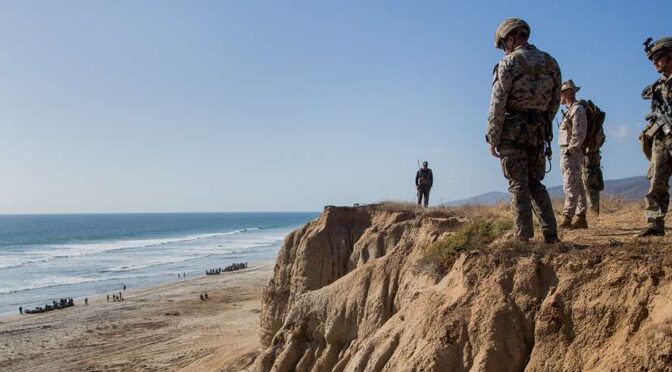Notes to the New Administration Week
By Captain Robert C. Rubel, USN (ret.)
The Navy is busy incorporating new technology into its fleet design, but is not paying commensurate attention to developing the officers who will fight that new fleet.
The Naval War College was the critical engine that drove the warfighting education of the officer corps that designed, perfected, and fought the fleet that produced victory at sea in World War II. But today, the college has become moribund in terms of its relevance to the emerging warfare environment. The current curriculum structure was adopted in 1972 when geopolitical and operational conditions were far different than today. In 1972, Rear Admiral Stansfield Turner imposed a new curriculum on both the senior and junior courses, one that emphasized academic rigor and focused on national strategy and policy. This curriculum remains in place, now heavily augmented by joint education requirements.
After World War II, the combination of American naval supremacy, the advent of nuclear weapons, and the maritime strategy of sustained forward deployments around the periphery of Eurasia served to sideline the Naval War College. In that environment the Bureau of Naval Personnel ceased assigning officers with the highest potential as students, making the college an unattractive career move for aspiring officers. Internally, research and teaching became largely separated, a situation that still exists to this day.
Wargaming, the core of the college’s teaching prior to WWII, is no longer heavily featured in the curriculum. Instead, the college now mostly focuses on providing joint education requirements and master’s degrees. Support to the fleet is provided by multiple branches, but the college still fails to be an engine of innovation and officer development as it once was. The modern college has drifted far from what it was in the decades before World War II.
The tool for revitalizing the Naval War College into a major engine of officer warfighting education exists in the form of the Halsey Groups, small advanced research programs based on rigorous classified wargaming that have been in operation since the early 2000s. But these classes are currently far too small to produce enough graduates that create a critical mass of officers with intensive wargaming experience. These classes and their procedures should be scaled up and used as the basis for a new junior course at the college that is strongly incentivized by the personnel system. Such a course could produce a hundred or more graduates per year that investigate warfighting concepts, campaign plans, and fleet designs through iterative wargaming, much like their interwar-period ancestors who would go on to win World War II.
The most recent high-profile Navy professional military education study, the Education for Seapower (E4S) study, focused on high-level strategic thinking and failed to recognize the importance of warfare education or the attendant research needed. Warfighting education is a prerequisite for developing higher-level strategic thinking later in an officer’s career. Moreover, while only a few officers have the opportunity to engage in high-level strategy, most officers occupy warfighting positions at some point in their careers.
Small groups such as the Strategic Studies Group, Deep Blue, and others have largely failed to achieve influence over Navy warfighting development regardless of the merit of their ideas. What is needed is a critical mass of officers with rigorous wargaming and research experience populating fleet units and staffs, like what occurred in the years from the Naval War College’s founding up to World War II. However, the college in recent times has demonstrated little interest in updating its core courses or expanding its wargaming programs to replicate its interwar-period success. Therefore, clear direction from OPNAV and SECNAV is required.
Robert C. Rubel is a retired Navy captain and professor emeritus of the Naval War College. He served on active duty in the Navy as a light attack/strike fighter aviator. At the Naval War College he served in various positions, including planning and decision-making instructor, joint education adviser, chairman of the Wargaming Department, and dean of the Center for Naval Warfare Studies. On occasion he served as a special adviser to the 31st Chief of Naval Operations. He has published over thirty journal articles and several book chapters.
Featured Image: SOUTH CHINA SEA (Jan. 12, 2025) Lt. Clint Vance, of Montana, signals an F/A-18F Super Hornet, assigned to the “Bounty Hunters” of Strike Fighter Squadron (VFA) 2, to launch from the flight deck of the Nimitz-class aircraft carrier USS Carl Vinson (CVN 70). (U.S. Navy photo by Mass Communication Specialist 3rd Class Nate Jordan)




